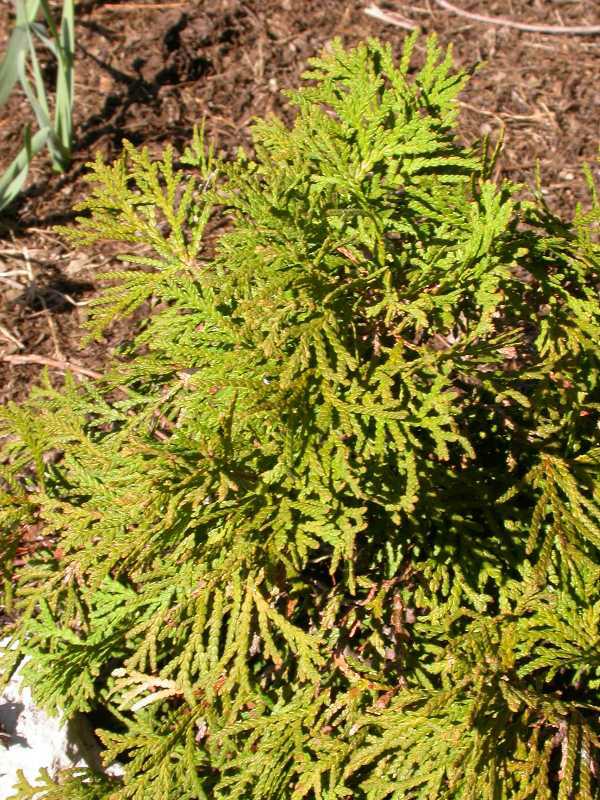American Arborvitae (Thuja Occidentalis ‘Little Gem’)
American Arborvitae
Thuja occidentalis, commonly known as American arborvitae, Eastern arborvitae, Eastern white cedar or Northern white cedar, is a dense, conical to narrow-pyramidal (sometimes maturing to broad-pyramidal), often single-trunked, evergreen tree that is native to eastern and central Canada south to northern Illinois, Ohio and New York with scattered populations further south in the Appalachians to North Carolina. Mature trees may reach 40-60′ tall in the wild over time, but in cultivation typically grow much smaller to 20-30′ tall. Scale-like, aromatic, yellow-green to green foliage appears in flattened sprays. Red-brown bark will exfoliate on mature branches and trunks.
Genus name is the Greek name for a kind of juniper (Juniperus.)
Specific epithet means from the Western (Occidental) world.
The common name of arborvitae (tree of life) comes from early French settlers to North America who learned from Native Americans that the tree’s foliage could be used to treat scurvy.
‘Little Gem’ is a dwarf, dense, flattened, broad-globular cultivar that typically matures to only 3’ tall and as much as 6’ wide over the first 10 years. It is very slow-growing. Dark green scale-like leaves in flat sprays may bronze in winter.

Grow in average, medium moisture, well-drained soils in full sun to part shade. Somewhat wide range of soil tolerance, but prefers moist, neutral to alkaline, well-drained loams. Intolerant of dry conditions. Best in full sun, but generally appreciates some light afternoon shade in hot summer climates such as the St. Louis area. Avoid full shade where foliage density will substantially decrease. Avoid exposed, windy sites.
| Hardiness zone | 3 - 7 |
| Sun light | Full Sun To Part Shade |
| Water | Medium |
| Maintenance | Low |
Leaf blight may cause some foliage to spot and drop. Watch for canker. Leaf miner may damage leaf tips. Bagworms, mealybug, scales and spider mites are occasional visitors. Foliage may show some winter burn (turns yellow-brown) in exposed sites. Susceptible to damage/stem breakage in winter from ice and snow accumulations.
Grown for its attractive foliage and dwarf shape. Good accent. Rock gardens. Foundations.
| Common name | American Arborvitae |
| Botanical name | Thuja Occidentalis 'Little Gem' |
| Plant type | Needled Evergreen |
| Family | Cupressaceae |
| Hardiness zone | 3 - 7 |
| Water | Medium |
| Maintenance | Low |
| Flower color | Non-Flowering |
| Flowering period | Non-Flowering |
| Height | 1 - 3 Ft. |
| Width | 2 - 6 Ft. |